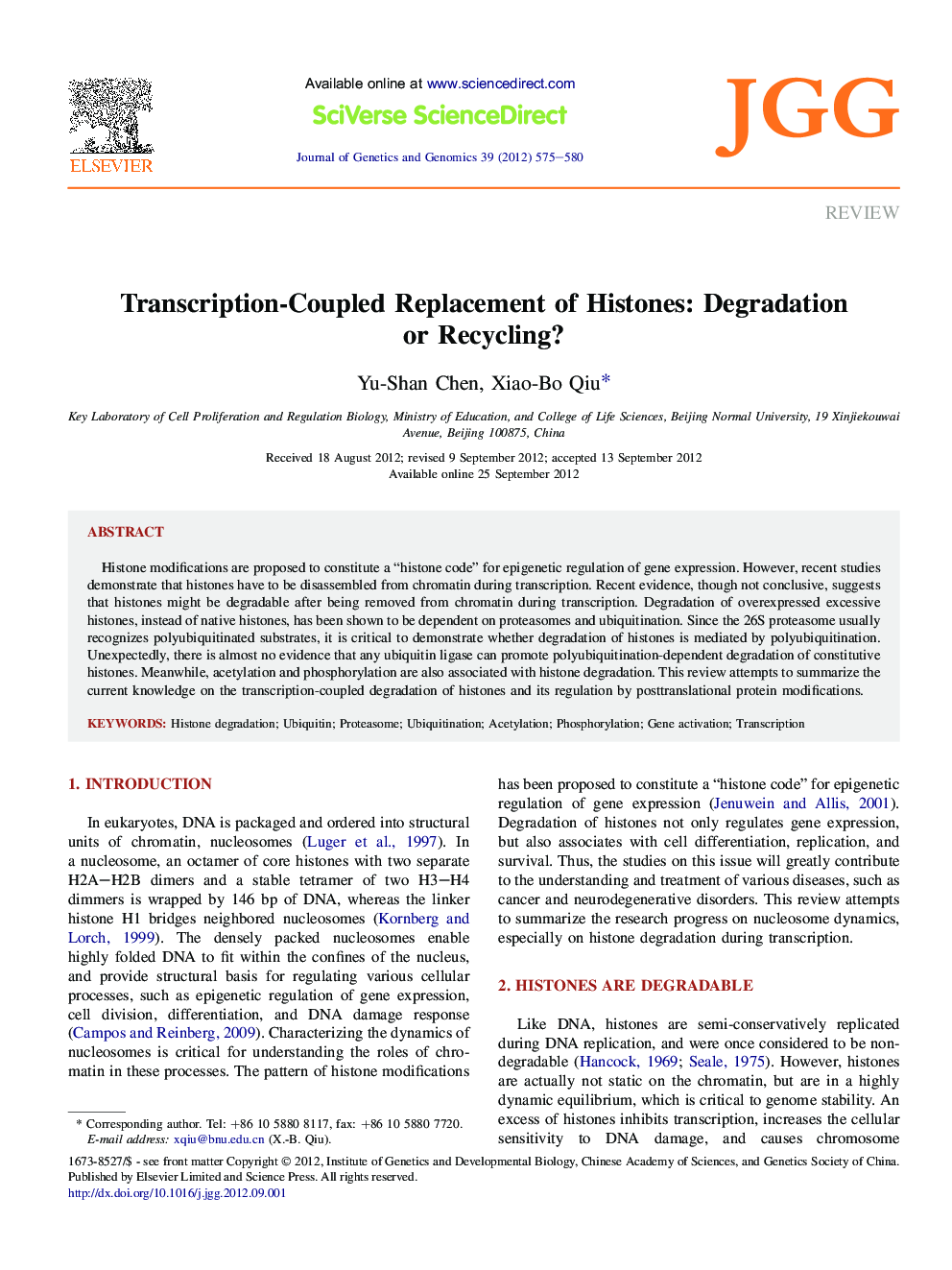| Article ID | Journal | Published Year | Pages | File Type |
|---|---|---|---|---|
| 2787730 | Journal of Genetics and Genomics | 2012 | 6 Pages |
Histone modifications are proposed to constitute a “histone code” for epigenetic regulation of gene expression. However, recent studies demonstrate that histones have to be disassembled from chromatin during transcription. Recent evidence, though not conclusive, suggests that histones might be degradable after being removed from chromatin during transcription. Degradation of overexpressed excessive histones, instead of native histones, has been shown to be dependent on proteasomes and ubiquitination. Since the 26S proteasome usually recognizes polyubiquitinated substrates, it is critical to demonstrate whether degradation of histones is mediated by polyubiquitination. Unexpectedly, there is almost no evidence that any ubiquitin ligase can promote polyubiquitination-dependent degradation of constitutive histones. Meanwhile, acetylation and phosphorylation are also associated with histone degradation. This review attempts to summarize the current knowledge on the transcription-coupled degradation of histones and its regulation by posttranslational protein modifications.
